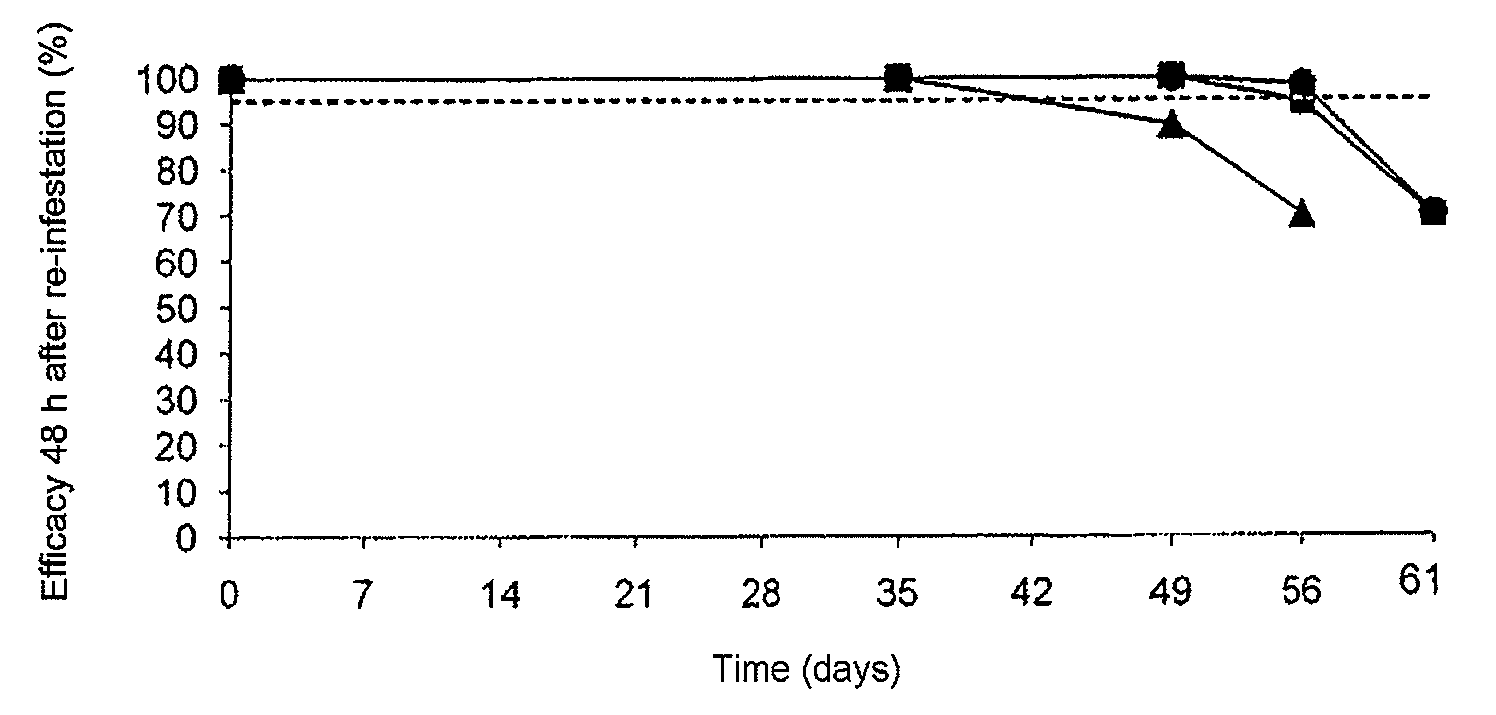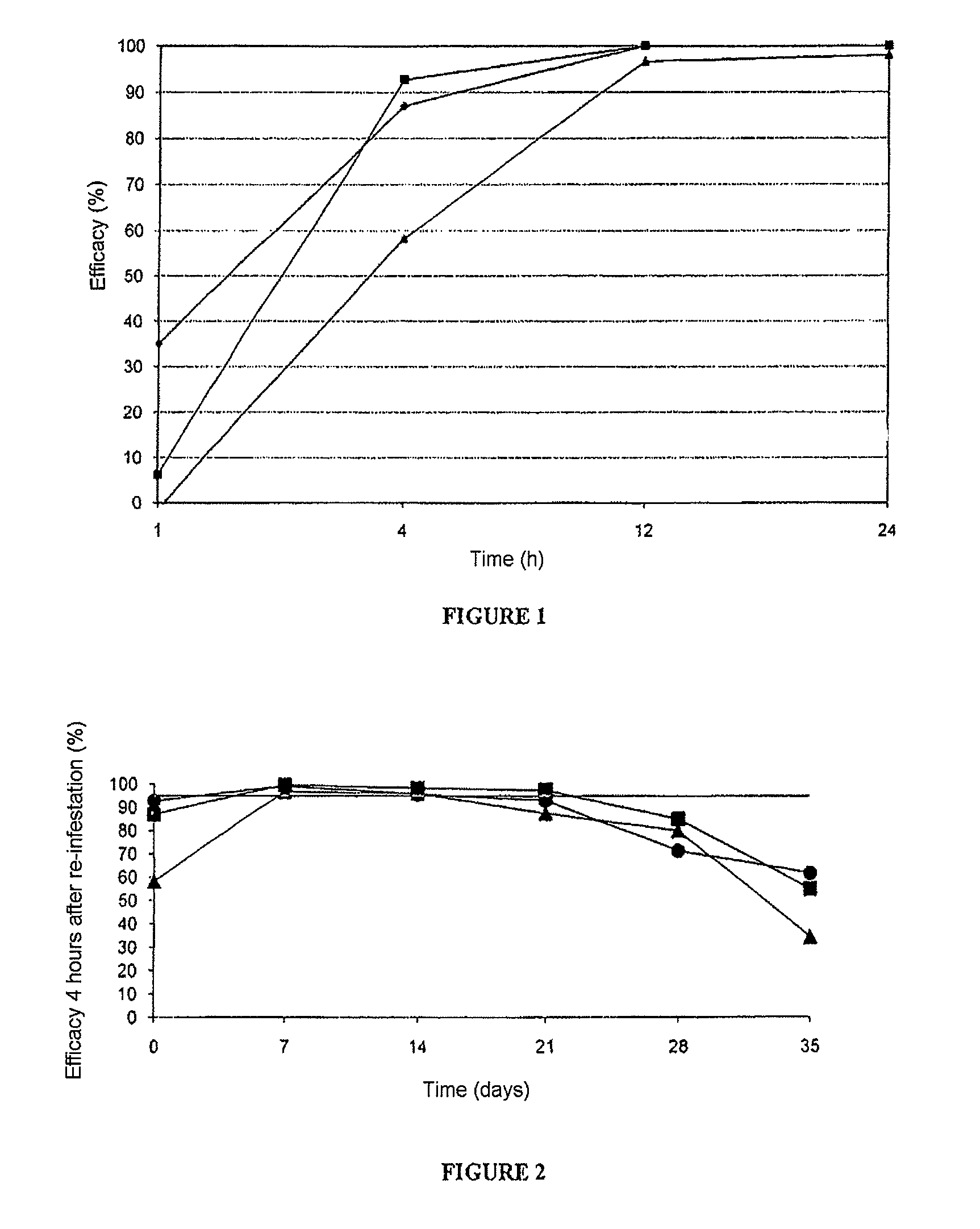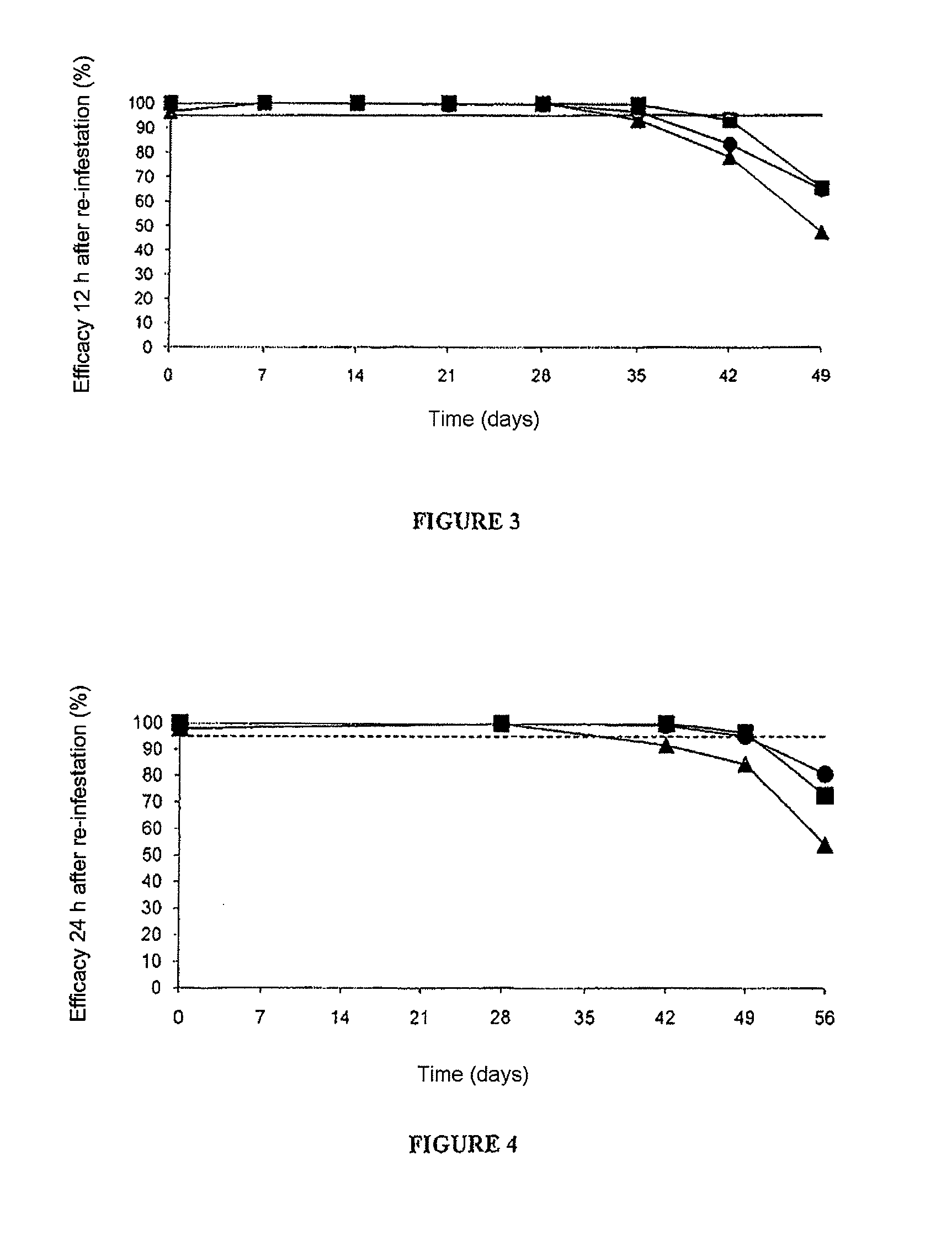Derivative for preparing a topical veterinary pharmaceutical composition for combating external parasites
a technology of nmethylamino and derivative, which is applied in the direction of antiparasitic agents, drug compositions, biocide, etc., can solve the problems of ticks and fleas infestation of domestic animals, affecting the health of animals and humans, and affecting the treatment effect of fleas, so as to achieve rapid and more persistent action, prevent and treat flea infestations, and facilitate administration
- Summary
- Abstract
- Description
- Claims
- Application Information
AI Technical Summary
Benefits of technology
Problems solved by technology
Method used
Image
Examples
example 1
Study of the Rapidity of Action of a Nitenpyram-Based Composition Administered Topically
[0075]In this example, a comparative study of the efficacy of nitenpyram (rapidity of action) administered topically, alone or in combination with fipronil, compared with fipronil administered alone, against cat fleas, was carried out.
1) Materials and Methods
a) Type of Study
[0076]It is a randomized, blind, controlled efficacy study carried out in parallel on 4 groups of six cats, according to the recommendations of the guidelines of the Committee for Veterinary Medicinal Products (CVMP): “Guidelines for the testing and evaluation of the efficacy of antiparasitic substances for the treatment and prevention of tick and flea infestations in dogs and cats”, EMEA / CVMP / 005 / 00-FINAL-Rev.l.
b) Animals Used and Maintenance Conditions
[0077]The cats used in this study were male or female, adult domestic cats more than 6 months old, of mixed breeds, but mainly of short-hair European breed, weighing between 2 ...
example 2
Preliminary Study of the Efficacy over Time of a Nitenpyram-Based Composition Against Fleas in Cats
[0096]In this example, the duration of efficacy of a topical formulation containing 20% by weight of nitenpyram, against flea infestations in cats, was studied.
[0097]This study was carried out on two cats of European breed weighing 5.5 and 3.8 kg, respectively. Throughout the duration of the experiment, the cats were placed in cages and fed according to the protocol indicated above in Example 1.
[0098]One day before the administration of the treatment, the cats were infested with a known amount of fleas of race identical to that used in Example 1 above.
[0099]Each cat then received, between the shoulder blades, a dose of 0.5 ml of topical formulation having the following composition:
[0100]
nitenpyram20gdiethylene glycol monoethyl etherqs 100ml
[0101]The number of fleas still alive 4 hours after the administration of the composition was then counted (D=0).
[0102]The cats were again infested ...
example 3
Supplementary Study of the Efficacy over Time of a Nitenpyram-Based Composition Against Fleas in Cats
[0110]In this example, a comparative study of the efficacy, over time, of nitenpyram administered topically, alone or in combination with fipronil, compared with fipronil administered alone, against cat fleas, was carried out. It is the continuation of the study of example 1 using compositions A, B and C.
1) Measurement of Treatment Efficacy
[0111]At a regular interval after the first administration (D=0), all the cats were infested with approximately 100 laboratory fleas, strain Ctenocephalides felis, of male or female gender. The re-infestations were thus carried out at D=7, D=14, D=21, D=28, D=35, D=42, D=49, D=56 and D=63. The fleas were then counted various times after application of the treatment (at 2, 4 and 12 hours after re-infestation at D=7, D=14, D=21 and D=28; at 4, 8 and 12 hours after re-infestation at D=35 and D=42; at 12, 24 and 48 hours after re-infestation at D=49; a...
PUM
| Property | Measurement | Unit |
|---|---|---|
| time | aaaaa | aaaaa |
| time | aaaaa | aaaaa |
| temperature | aaaaa | aaaaa |
Abstract
Description
Claims
Application Information
 Login to View More
Login to View More - R&D
- Intellectual Property
- Life Sciences
- Materials
- Tech Scout
- Unparalleled Data Quality
- Higher Quality Content
- 60% Fewer Hallucinations
Browse by: Latest US Patents, China's latest patents, Technical Efficacy Thesaurus, Application Domain, Technology Topic, Popular Technical Reports.
© 2025 PatSnap. All rights reserved.Legal|Privacy policy|Modern Slavery Act Transparency Statement|Sitemap|About US| Contact US: help@patsnap.com



